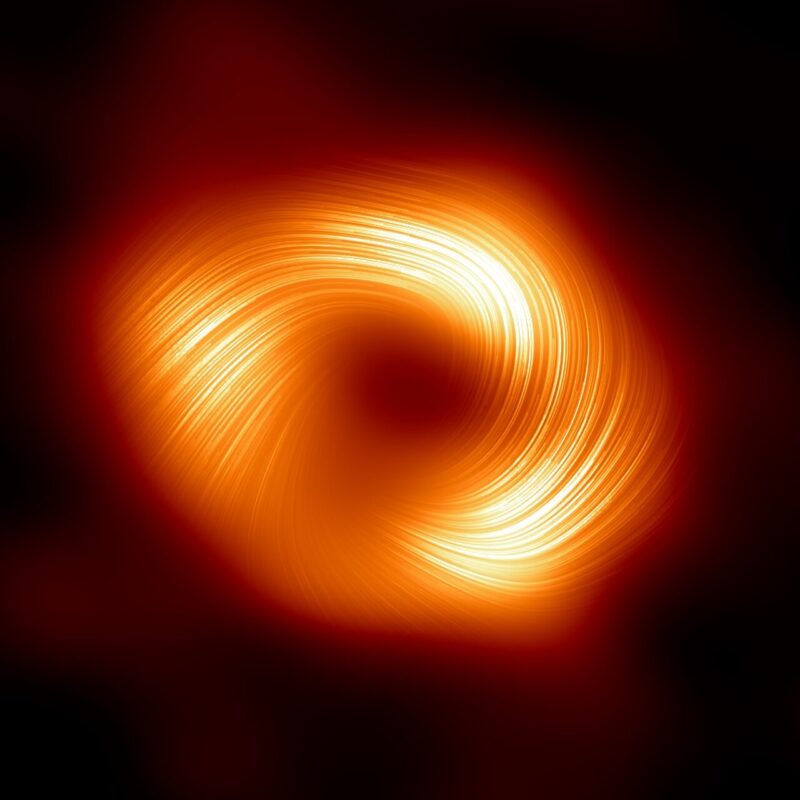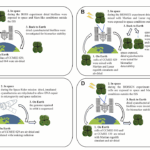Now Reading: Shape of a supernova detected 1 day after explosion
-
01
Shape of a supernova detected 1 day after explosion
Shape of a supernova detected 1 day after explosion
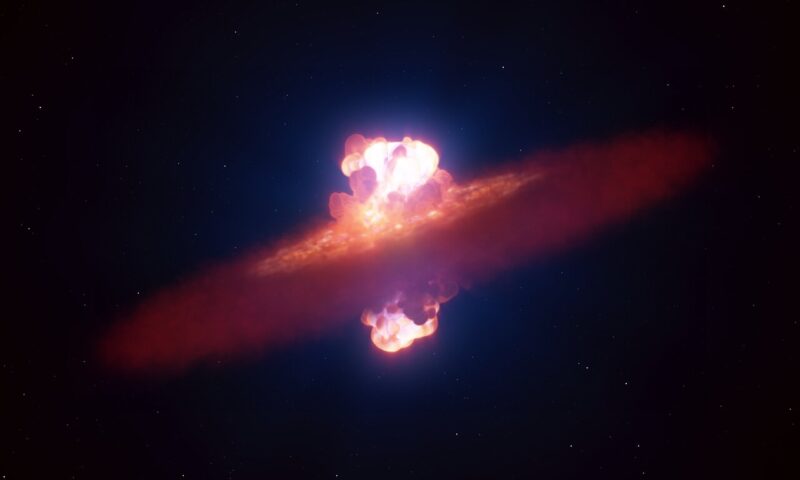
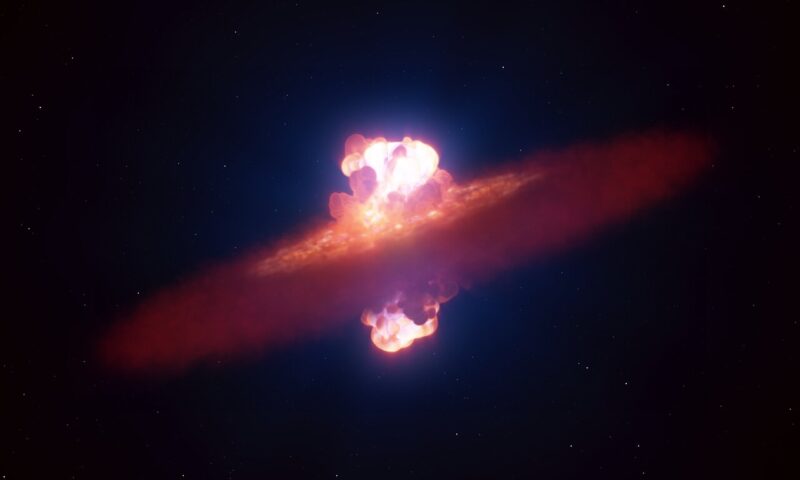
No hype. Just real science, powered by real people.
That’s you. Donate today!
- Astronomers captured a supernova explosion just 26 hours after it began. They used ESO’s Very Large Telescope to observe SN 2024ggi at the moment its shockwave burst through the star’s surface.
- The blast was olive-shaped rather than spherical. It was the first time astronomers have seen a supernova explosion at its earliest stage.
- This knowledge enables astronomers to rule out some supernova models and add new information to improve others. It provides insights into the powerful deaths of massive stars.
ESO published this original story on November 12, 2025. Edits by EarthSky.
Shape of a supernova detected 1 day after explosion
When the supernova explosion SN 2024ggi was first detected on the night of April 10, 2024, Yi Yang, an assistant professor at Tsinghua University in Beijing, China, and the lead author of the new study, had just landed in San Francisco after a long-haul flight. He knew he had to act quickly. Twelve hours later, he had sent an observing proposal to ESO, which, after a very quick approval process, pointed its Very Large Telescope (VLT) in Chile at the supernova on April 11, just 26 hours after the initial detection.
SN 2024ggi is in the galaxy NGC 3621 in the direction of the constellation Hydra. It’s “only” 22 million light-years away, close by in astronomical terms. With a large telescope and the right instrument, the international team knew they had a rare opportunity to unravel the shape of the explosion shortly after it happened. Dietrich Baade, an ESO astronomer in Germany, is co-author of the peer-reviewed study published November 12, 2025, in Science Advances. Baade said:
The first VLT observations captured the phase during which matter – accelerated by the explosion near the center of the star – shot through the star’s surface. For a few hours, the geometry of the star and its explosion could be, and were, observed together.
Yang said:
The geometry of a supernova explosion provides fundamental information on stellar evolution and the physical processes leading to these cosmic fireworks.
Watch a video about the shape of a supernova.
A massive star explodes
Scientists are still debating the exact mechanisms behind supernova explosions of massive stars, those with more than eight times the mass of the sun. It’s a fundamental question scientists want to address. This supernova’s progenitor was a red supergiant star. It had a mass 12 to 15 times that of the sun and a radius 500 times larger. Thus, SN 2024ggi is a classical example of a massive-star explosion.
During its life, a typical star keeps its spherical shape due to a precise equilibrium of the gravitational force that wants to squeeze it and the pressure of its nuclear engine that wants to expand it. When it runs out of fuel, the nuclear engine starts sputtering. For massive stars, this marks the beginning of a supernova. The core of the dying star collapses, the mass shells around fall onto it and bounce off. This rebound shock then propagates outward, disrupting the star.
Once the shock breaks through the surface, it unleashes immense amounts of energy. The supernova then brightens dramatically to the point we can observe it. During a short-lived phase, we can study the supernova’s initial “breakout” shape before the explosion interacts with the material surrounding the dying star.
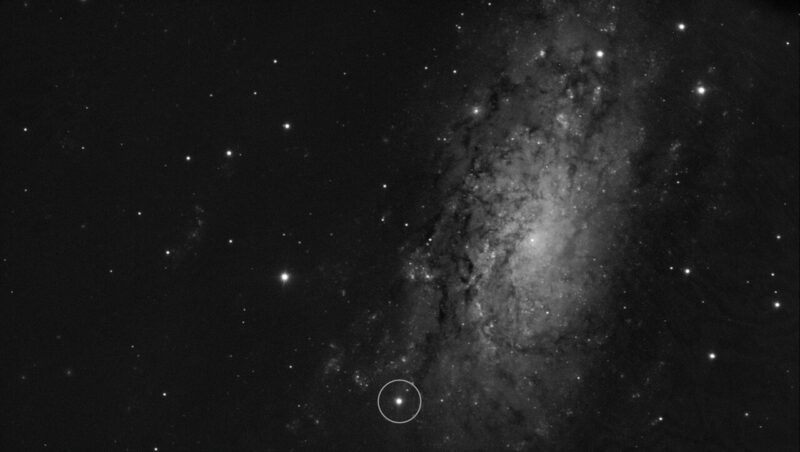
Revealing the shape of a supernova
This is what astronomers have now achieved for the very first time with ESO’s VLT, using a technique called “spectropolarimetry.” Lifan Wang, co-author and professor at Texas A&M University in the U.S., was a student at ESO at the start of his astronomy career. Wang said:
Spectropolarimetry delivers information about the geometry of the explosion that other types of observation cannot provide because the angular scales are too tiny.
Even though the exploding star appears as a single point, the polarization of its light carries hidden clues about its geometry, which the team was able to unravel.
A blast shaped like an olive
The FORS2 instrument installed on the VLT captured the blast. With the FORS2 data, astronomers found the initial blast of material was shaped like an olive. As the explosion spread outward and collided with the matter around the star, the shape flattened. But the axis of symmetry of the ejecta remained the same. Yang said:
These findings suggest a common physical mechanism that drives the explosion of many massive stars, which manifests a well-defined axial symmetry and acts on large scales.
So now, astronomers can already rule out some of the current supernova models and add new information to improve others. The information provides insights into the powerful deaths of massive stars. Co-author and ESO astronomer Ferdinando Patat said:
This discovery not only reshapes our understanding of stellar explosions, but also demonstrates what can be achieved when science transcends borders. It’s a powerful reminder that curiosity, collaboration and swift action can unlock profound insights into the physics shaping our universe.
Bottom line: After a supernova exploded in a distant galaxy, astronomers used quick work to point a telescope at the blast and detect the shape of a supernova just one day later.
The post Shape of a supernova detected 1 day after explosion first appeared on EarthSky.
Stay Informed With the Latest & Most Important News
Previous Post
Next Post
-
 012024 in Review: Highlights from NASA in Silicon Valley
012024 in Review: Highlights from NASA in Silicon Valley -
 02Panasonic Leica Summilux DG 15mm f/1.7 ASPH review
02Panasonic Leica Summilux DG 15mm f/1.7 ASPH review -
 03How New NASA, India Earth Satellite NISAR Will See Earth
03How New NASA, India Earth Satellite NISAR Will See Earth -
 04And Thus Begins A New Year For Life On Earth
04And Thus Begins A New Year For Life On Earth -
 05Astronomy Activation Ambassadors: A New Era
05Astronomy Activation Ambassadors: A New Era -
06SpaceX launch surge helps set new global launch record in 2024
-
 07Space Force plans new ‘Futures Command’ amid pressure to speed up modernization
07Space Force plans new ‘Futures Command’ amid pressure to speed up modernization














